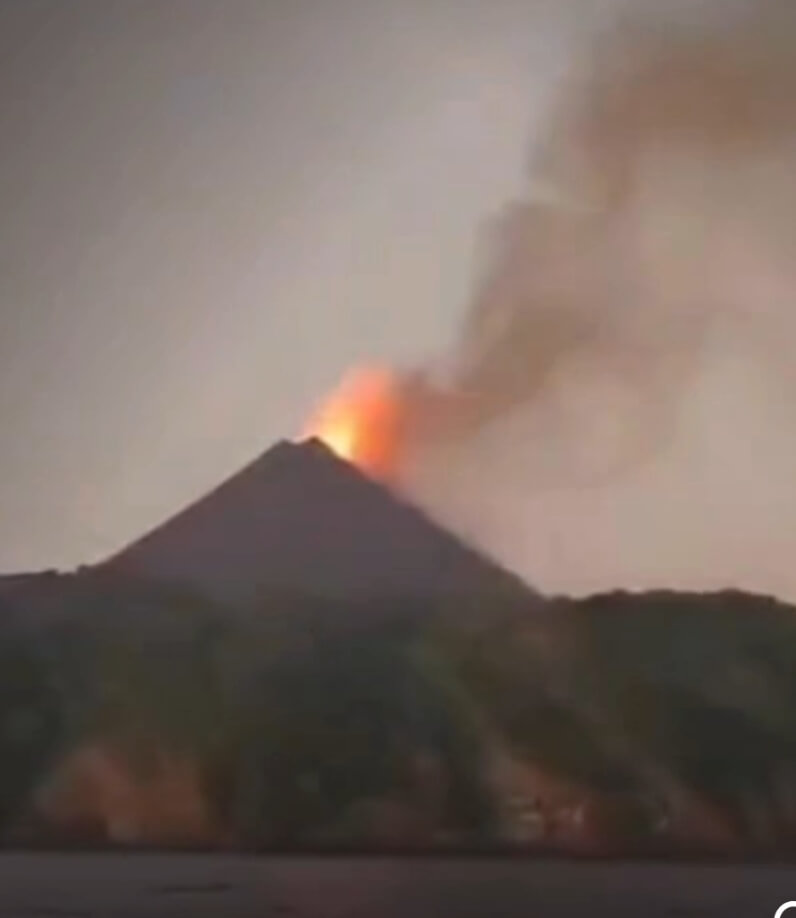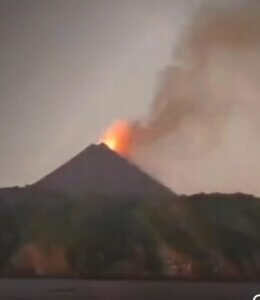Barren Island Volcano Erupts Twice in September 2025 India s Only Active Volcano Reactivates
Port Blair, Andaman and Nicobar Islands – The stunning Andaman and Nicobar archipelago, best known for its white-sand beaches and turquoise waters, is now making headlines for a different reason — India and South Asia’s only active volcano, located on Barren Island, has erupted twice in the last eight days.

Barren Island Volcano Erupts on September 13 and 20, 2025
According to officials and a report by news agency PTI, the Barren Island volcano erupted first on September 13 and then again on September 20, 2025. These eruptions were of mild intensity, but significant enough to draw attention from scientists and defense forces. The Indian Navy warship stationed nearby captured rare visuals of the eruption, which have since been shared with geological agencies for further analysis.
This is the first recorded eruption since 2022, adding to the island’s known history of volcanic activity. Previous eruptions were recorded in 1787, 1991, 2005, 2017, and 2022, highlighting the island’s periodic but consistent volcanic behavior.
What is Barren Island?
Barren Island is an uninhabited volcanic island located approximately 140 kilometers from Port Blair, the capital of the Andaman and Nicobar Islands. It spans about 8.34 square kilometers and is composed almost entirely of volcanic ash, rocks, and hardened lava. The island lies at the intersection of the Indian and Burmese tectonic plates, making it a natural hotspot for geological activity.
Despite its name and remote location, Barren Island is a subject of intense study due to its active stratovolcano — a rare geological feature in the South Asian region.
Why Do Volcanoes Erupt?
Volcanic eruptions occur when pressure builds beneath the Earth’s surface, caused by extreme heat melting rocks into magma. As pressure increases, it seeks an outlet — much like champagne bursting from a shaken bottle. Eventually, the pressure cracks the Earth’s surface, allowing molten lava, ash, and gases to escape.
Volcanoes can erupt in two primary ways:
- Explosive Eruptions – With loud blasts and massive outflows of ash and lava.
- Effusive Eruptions – Where lava slowly oozes out over time without violent explosions.
In the case of Barren Island, recent activity suggests mild effusive eruptions, although continuous monitoring is essential to assess any escalation.
Lava, Ash, and Gases: What Comes Out of a Volcano?
During an eruption, lava — the thick, molten rock — flows from the volcano’s crater. Along with lava, a mix of volcanic ash, carbon dioxide, sulfur dioxide, and other gases are released into the atmosphere. These elements can influence climate, air quality, and marine ecosystems in the region.
Indian Navy Captures Rare Footage of Barren Island Eruption
On September 20, 2025, the Indian Navy successfully recorded rare visuals of the Barren Island volcano’s activity. These visuals are critical for scientists, helping to analyze the scale, frequency, and type of eruption.
Is Barren Island Safe to Visit?
Although the island itself is restricted and uninhabited, tourist boat trips and aerial tours from Port Blair offer distant views of the volcano. Due to the recent eruptions, authorities may impose temporary travel and maritime restrictions near Barren Island to ensure safety.
Tour operators and travelers are advised to stay updated with the Andaman Tourism Department and local maritime authorities for the latest advisories.
| Feature | Details |
|---|---|
| Volcano Location | Barren Island, Andaman & Nicobar |
| Recent Eruptions | September 13 & 20, 2025 |
| Last Eruption Before 2025 | 2022 |
| First Recorded Eruption | 1787 |
| Island Size | 8.34 sq km |
| Distance from Port Blair | 140 km |
| Type | Active Stratovolcano |
Conclusion
The Barren Island volcano continues to remind us of the dynamic and powerful forces that shape our planet. As India’s only active volcano, it stands as both a scientific wonder and a natural marvel, drawing the attention of geologists, defense forces, and nature lovers alike. With increased monitoring and research,

